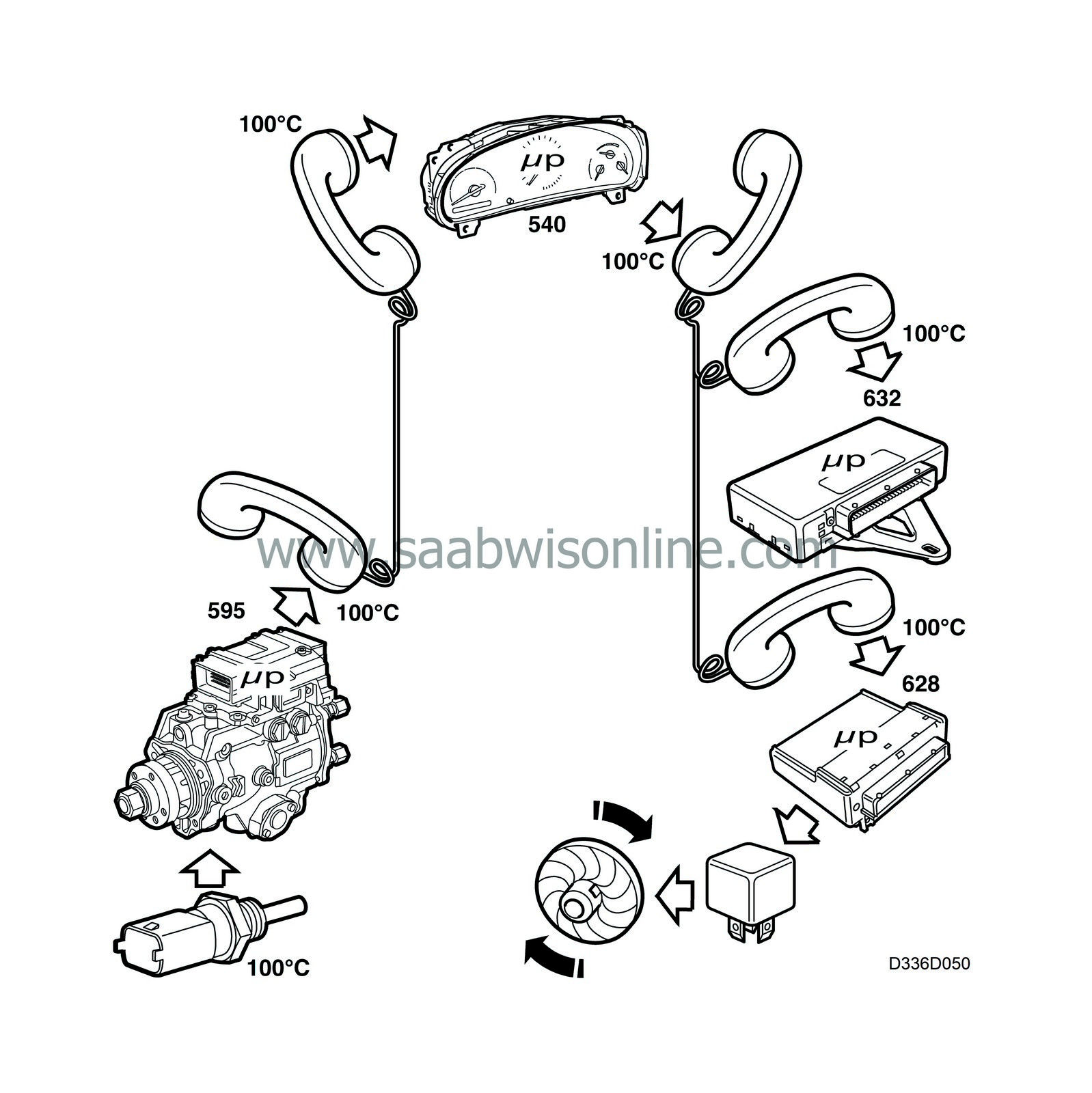Principle of communication
| Principle of communication |

The bus may be regarded as a two-wire telephone line running between the control modules. With the ignition switched on, communication goes on continuously. With the ignition switched off, a control module that is operative may if necessary awaken the other control modules. This happens for example when a door is opened and the TWICE, to which the door switches are connected, awakens the others so that the DICE will be able to switch on the interior lighting.
When one of the control module microprocessors speaks, the other control modules listen to it regardless of whether the information is of interest to them or not. The MIU transfers the information from one bus to another. All information sent out on a bus by one control module is then available to all other control modules connected to a bus.
With the bus system, signal leads can be removed and the number of sensors reduced.
Cars with the Trionic T7 have only one engine coolant temperature sensor. Since the engine control module is connected to a bus, the temperature of the coolant is continuously available to all systems. That is why only one engine coolant temperature sensor is needed.
The engine control module in diesel cars has a coolant temperature sensor. Since the engine control module is connected to the bus, the temperature is always available to the system. For this reason, only one coolant temperature sensor is required in cars with diesel engines.
The coolant temperature is used by the DICE for controlling the radiator fans (see illustration), by the MIU for controlling the temperature gauge, and by the ACC for controlling ventilation fan speed and air distribution when starting from cold.
Basically, it could be said that the control modules connected to a bus are like one big control module with a number of sensors and a number of actuators. Bus communication may be regarded as internal control module communication.
This means that an overall view of the car is essential when carrying out fault diagnosis. A malfunction need not necessarily be caused by a fault in the system where it appears but may very well be caused by a defective sensor in another system.



